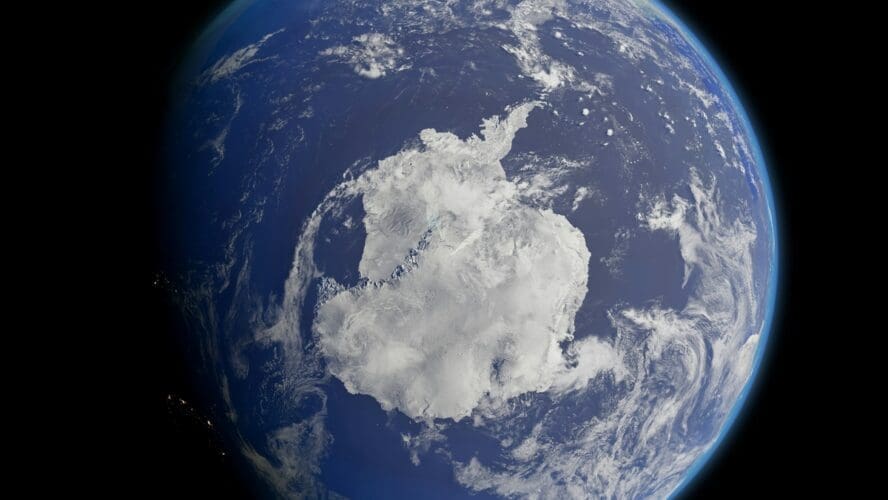The Hole in the Ozone Layer Is Healing, Thanks to Human Efforts
The ozone layer is healing, and it’s a symbol of hope around the power of human efforts.

It sometimes feels like the only options we have in terms of news are “bad” or “worse.” But if you’re looking for a silver lining, we’ve got you covered: The hole in the Earth’s ozone layer is healing, according to a new report from the United Nations’ World Meteorological Organization1. And what’s more, this reversal is thanks in large part to human efforts, which shows that we can indeed make a difference in the battle against climate change.
According to the new report, released September 16, the hole in the ozone layer over the Antarctic was smaller in 2024 than it has been in recent years. While the researchers noted that this was in part a natural occurrence linked to atmospheric fluctuations, it was also in large part thanks to “concerted international action.”
“Today, the ozone layer is healing,” UN chief Antonio Guterres said in the statement. “This achievement reminds us that when nations heed the warnings of science, progress is possible.”
What Is the Ozone Layer?

Ozone is a naturally occurring gas in the Earth’s stratosphere that protects the planet from UV radiation. The hole in the Earth’s ozone layer, which was discovered in 1985, allowed dangerous UV rays to filter down to the surface2. This led to increased risk of diseases caused by sun exposure, including skin cancer and cataracts, as well as environmental and ecosystem damage.
According to the report, the ozone layer is “now on track to recover to 1980s levels by the middle of this century.” This echoes a 2022 report, which found that the ozone layer should completely recover by as soon as 2040 over most of the world3. The Arctic will nevertheless need to wait until 2045 to recoup its lost protection, the report noted, and the Antarctic until 2066.
A Global Push Away from Ozone-Depleting Substances
The new UN report is in line with findings published by a team at MIT in March, which had already spotlighted a direct link between global efforts to reduce the use of ozone-depleting substances like chlorofluorocarbons (CFCs) and the healing of the ozone layer above the Antarctic4. While previous research had indicated that the situation was improving, the MIT report was the first to isolate the influence of specific climate factors, demonstrating the direct effects of human efforts.
“Some of you will see the ozone hole go away completely in your lifetimes,” said study author Susan Solomon, the Lee and Geraldine Martin Professor of Environmental Studies and Chemistry at MIT. “And people did that.”
More Opportunities for Progress

The publication of the UN’s new report was timed to the 40th anniversary of the Vienna Convention, which first recognized the ozone layer hole as a global problem. This paved the way for the 1987 Montreal Protocol, which resulted in a phase-out of more than 99 percent of ozone-depleting substances.
In decades past, CFCs were frequently used in refrigeration, air conditioning, and aerosol propellants. Today, they have largely been phased out and replaced with hydrofluorocarbons (HFCs). While these compounds do not contribute to ozone depletion, they do have global warming potential, which has led to pushes to reduce their use in favor of hydrofluoroolefins (HFOs)5. HFOs have zero ozone-depletion potential and also boast a far lower global warming potential, representing yet another potential step forward that can only be made possible with human effort.
Sources:
- https://wmo.int/news/media-centre/wmo-bulletin-shows-successful-recovery-of-ozone-layer-driven-science
- https://ozonewatch.gsfc.nasa.gov/facts/history_SH.html
- https://ozone.unep.org/system/files/documents/Scientific-Assessment-of-Ozone-Depletion-2022-Executive-Summary.pdf
- https://www.nature.com/articles/s41586-025-08640-9
- https://iee.psu.edu/news/blog/hydrofluorocarbons-saved-ozone-layer-are-warming-earth

